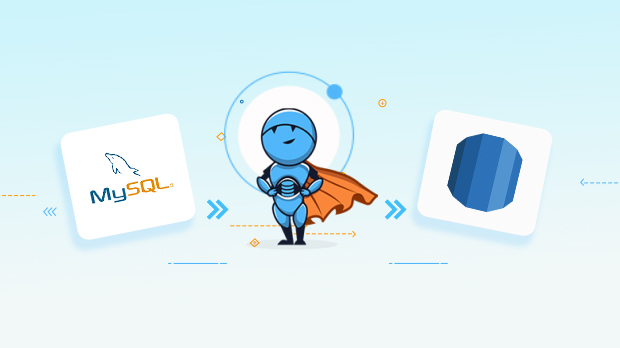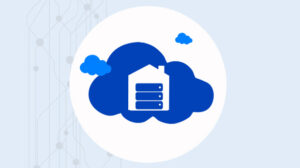Replicate MySQL to Redshift in minutes
Many companies use MySQL to power their web-based applications and services every day. Though MySQL is a powerful cloud database when it comes to deriving powerful analytics from your entire data set it hampers the performance. Replicate your data from MySQL to Amazon Redshift and start generating insights that help your eCommerce business succeed. Integrate your MySQL data into Redshift ensuring no data loss at any point and build a single source of truth for your teams to access. Replicating your data also ensures consistent data quality, which is crucial for reliable business insights.
In this article, we have covered two approaches in detailed steps on how to replicate your MySQL data to Redshift. Let’s get started!
Why integrate MySQL to Amazon Redshift?
MySQL is designed for transactional data like customer records and financial data. Running analytical queries on MySQL databases can have a severe impact on its performance. For real-time data analytics on high volumes of data, Redshift has distinct benefits which MySQL cannot handle at scale. Amazon Redshift can handle large-scale data analytics. It helps you to capture and analyze all of your data in one place. Consolidating your data from MySQL to Amazon Redshift provides a powerful solution to your BI (Business Intelligence) needs and it can push your business to the next level.
MySQL Overview
MySQL is a relational database management system (RDBMS) developed by Oracle that is based on structured query language (SQL). It is powerful, flexible, and scalable database management system software used for managing the relational database. MySQL is integral to many of the most popular software stacks for building web applications to powerful, data-driven B2B services. Its open-source, secure nature and rich feature set, paired with ongoing development and support from Oracle make it a reliable cloud database in the market.
Redshift Overview
Amazon Redshift is a fast, fully managed, petabyte-scale cloud data warehouse service that makes it simple and cost-effective to efficiently analyze all your data using SQL and your existing business intelligence tools. Redshift is a columnar store, making it particularly well-suited to large analytical queries against massive datasets. It is also used to perform large-scale database migrations. Redshift is a hugely popular data warehouse, offering a balance between easy maintenance and robust customization options. It also offers the performance, speed, and scalability required to address your data warehousing and ETL needs.
How to replicate MySQL to Amazon Redshift?
Here’s an overview of the two approaches you can use to replicate MySQL data to Redshift. This will allow you to evaluate the pros and cons of both and choose the one that best suits your requirement.
Build your own data pipeline
This process needs a lot of experience and consumes a lot of time and manpower. The chances of errors are more due to multiple integrated steps one after the other. You need to extract data using MySQL APIs & then connect it properly with the Redshift data warehouse. This whole process to build a custom data pipeline is cumbersome.
Use Daton to integrate MySQL and Redshift
Integrating MySQL and Redshift with Daton is the fastest & easiest way to save your time and efforts. Leveraging an eCommerce data pipeline like Daton significantly simplifies and accelerates the time it takes to build automated reporting.
Configuring data replication on Daton only takes a few minutes and a few clicks. Your analysts do not have to write any code or manage any infrastructure, yet you can get access to MySQL data in a few hours.
Daton’s simple and easy-to-use interface allows analysts and developers to use UI elements to configure data replication from MySQL to Amazon Redshift.
Daton takes care of:
- Authentication
- Rate limits
- Sampling
- Historical data load
- Incremental data load
- Table creation, deletion, reload
- Refreshing access tokens
- Notifications
and many more important functions for data analysts to focus on analysis rather than worrying about data migration.
Steps to integrate MySQL with Daton

- Sign in to Daton
- Select MySQL from the integrations page
- Provide Integration Name, Replication Frequency, and History. Integration name would be used in creating tables for the integration and cannot be changed later
- You will be redirected to MySQL login for authorizing Daton to extract data periodically
- Post successful authentication, you will get prompts to choose from the list of available MySQL accounts
- Select required tables from the available list of tables
- Then select all required fields for each table
- Submit the integration
For more information, visit MySQL Connector.
Sign up for a trial of Daton today!
Here are more reasons to explore Daton for MySQL Redshift Integration
- Faster integration – MySQL to Amazon Redshift is one of the integrations Daton can handle very conveniently and seamlessly. By following a few steps you can easily connect MySQL to Amazon Redshift.
- Low Effort & Zero Maintenance – Daton automatically takes care of all the data replication processes and infrastructure once you sign up for a Daton account and configure the data sources. No need to manage infrastructure or write manual code.
- Data consistency guarantee and an incredibly friendly customer support team ensure you can leave the data engineering to Daton and focus on analysis and insights!
- Enterprise-grade data pipeline at an unbeatable price to help every business become data-driven. Get started with a single integration today for just $10 and scale up as your data needs grow.
- Robust Scheduling Options: This allows you to schedule jobs based on their requirements using a simple configuration step.
- Support for all major cloud data warehouses including Google BigQuery, Snowflake, Amazon Redshift, Oracle Autonomous Data Warehouse, PostgreSQL, and more.
- Flexible loading options allow you to optimize data loading behavior to maximize storage utilization and ease of querying.
- Enterprise-grade encryption gives your peace of mind
- Support for 100+ data sources – In addition to MySQL, Daton can extract data from a varied range of sources such as Sales and Marketing applications, Databases, Analytics platforms, Payment platforms, and much more.
For all sources, check our data connectors page.
Use Daton for fast and reliable replication from MySQL to Amazon Redshift without the hassle and headache of writing ETL scripts.
Other Articles by Saras Analytics,













